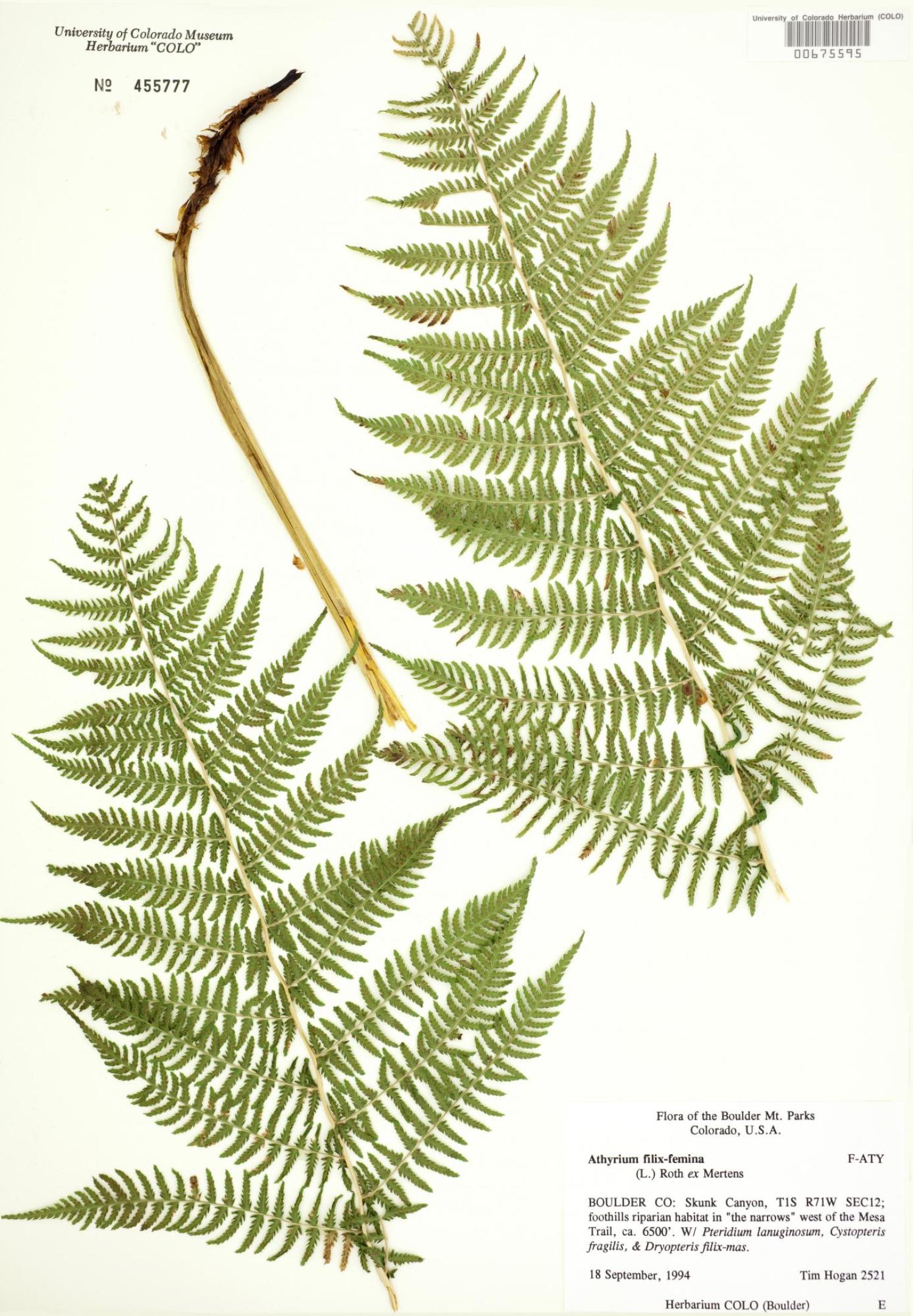The CU Museum is closed we will be opening early in the spring semester.
During this time, collection visits will be available by appointment and other special access requests will be considered on a case-by-case basis.
Please email cumuseum@colorado.edu for more information.
Lady Fern
Lady fern (Athyrium filix-femina), also known as the alpine lady fern, is an uncommon plant in Colorado but can be found in 49 out of 50 states, excluding Hawaii, making it one of the most abundant ferns in the U.S. The telltale mark of a lady fern are clusters of reddish or bright green sori, or spore sacs, on the underside of its almost lacy, feathered fronds1. These sori identify the filix-femina as a pteridophytes, a group of vascular plants that reproduce by spores rather than seeds.
Found along stream courses and other damp sites in the shade of trees and shrubs on the forest floor, the dry climate of Colorado can prove tough for the lady fern, despite being one of the most tolerant ferns of sun and dry soil2. The tolerance to low water enables lady ferns to be attractive “living fossil” additions to home gardens in Colorado, so long as they are strategically planted in shaded areas, which can also help them cultivate red or pink stems opposed to the more common bright green.
Athyriums account for 180 species of nearly 15,000 species of fern2. Ferns are an ancient lineage—hence the name “living fossil”—reaching back 400 million years, to a time when planet Earth just began to support terrestrial life. Be sure to check out the CU Museum's virtual highlight tours of our Paleontology Hall to display many types of fossils, living or not, that teachers, paleontology fans, and dinosaur buffs alike may enjoy!
1. Stewart, R., 2020. “Plant of the Week.” U.S. Department of Agriculture, U.S. Forest Service.
2. 2013. “Athyrium filix-femina - Lady Fern.” Friends of the Arboretum Native Plant Sale, University of Wisconsin-Madison.


